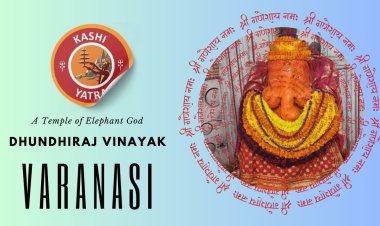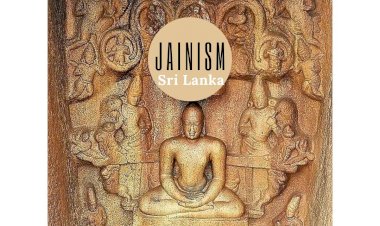Hot stone bath of Bhutan - A traditional way to rejuvenate body & soul !
One of the best way to unwind after a extended long tour in Bhutan is the HOT STONE BATH (Dotsho or Menchu). Traditionally, practiced since ages in Bhutan. I A trditional bath is a unique combination of the natural elements.Soaking in Menchu with (Water with medicinal properties) is one of the favourite activities for Bhutanese, especially during the winters. The hot stone bath is a ritual in itself, riverside rocks are heated till red hot and gradually dropped into a wooden tub filled with water and scattered with Artemisia leaves. The piping hot rocks heats the water gradually and thus release minerals in to the water. Expereince a authentic bath relaxed in a traditional way without having to feel the discomfort. A hot cup of tea or a glass of locally brewed wine known as Ara can add to the whole experience,
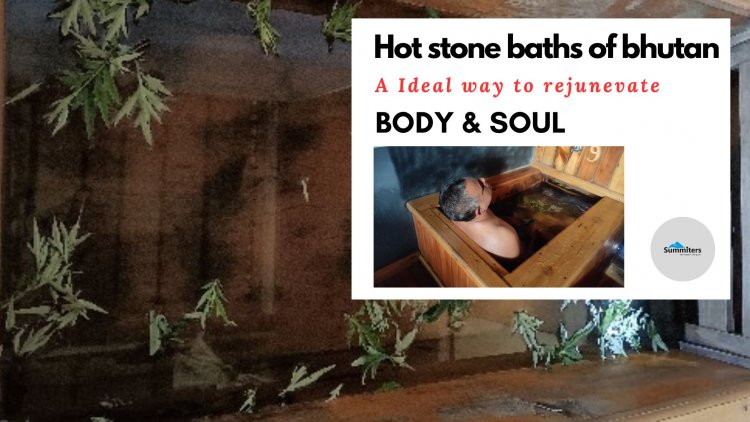
A grand view after an arduous climb and a hot shower after it.
Is it, not something one really longs for?.
Be honest, Isn't that true !
How about a sauna with hot water, using traditional herbs and natural stones to cleanse your body and rejuvenate your soul?
Bhutan - The land that fulfills what you crave and makes you truly happy.
A visit to Bhutan - A Land of Happiness - aptly referred to, would be incomplete without experiencing a hot stone bath, and hence this must feature on every visitor's itinerary. A Bhutanese hot stone bath is a perfect way to relax and wind down after a long day of sightseeing and is also believed to have numerous health benefits.
What is a stone bath?
The process of a traditional Bhutanese hot stone bath is simply unique. Menchu (medicinal water) is nothing but fresh river water mixed with Artemisia leaves and other herbs found in Bhutan that has high medicinal effects thus justifying....
An Ecological name often invoked as Lhojong Menjong - A land of medicinal herbs.
The water is heated using river stones that are roasted on fire till they are glowing red. The temperature of the water can be increased by adding more heated stones into a wooden chamber which serves as a partition via a chute. This chamber is connected to the main tub (normally made of pine wood) which contains the water.
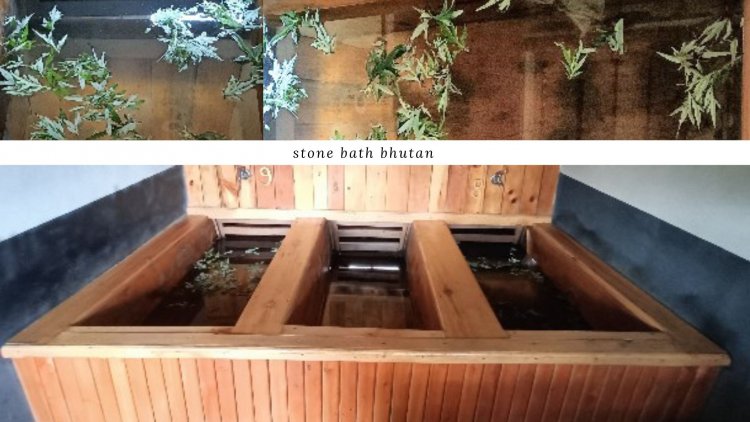
Bhutanese Hot Stone Bath in Paro
A bit of history
Traditionally, during ages hot stone baths is being arranged in a very rustic set up, inside a farmhouse or near a river bank where there are plenty of rocks or next to a gurgling stream where river water is available readily and amidst nature. In addition, also provide a panoramic view of the surroundings. However, this bath is proven as a spa and wellness option in many hotels and resorts which may better suit the expectations of the visitor and may also cater to the luxurious preferences they opt for
Be it a tiring day or a day just like any other one; a hot stone bath is a highly recommended activity for anyone or an experience visiting Bhutan, especially in winter. Soaking in a Bhutanese hot stone bath for an hour or so is sure relief and relieves body stress.
The Process and Procedure
The process starts with heating large river stones of various sizes and shapes on a big fireplace. Once the stones are glowing red, they are dropped in a connecting chamber using tongs of a pine wood trough (tub), which is filled with water. The slots in the chamber allow the stones to heat up the water and also give out minerals that dissolve and infuse the bath with medicinal properties.
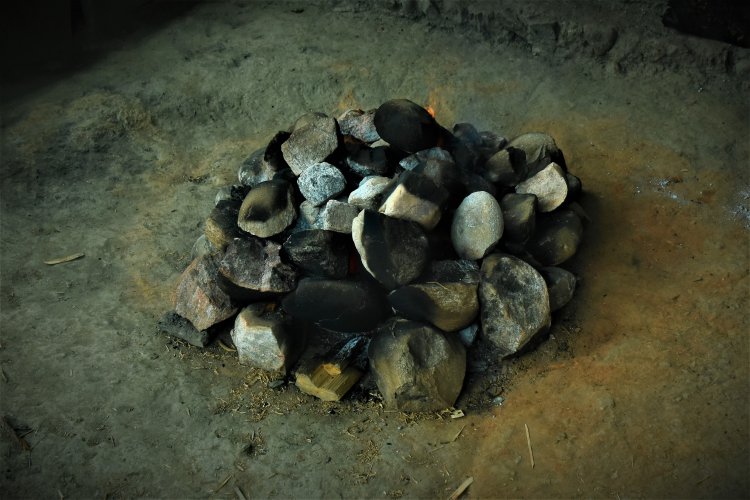
Red hot stones
The slot in the chamber allows the heat to be transferred into the bath (so there is no danger of being burned or in direct contact with the skin by the hot stones) and the stones are said to release key minerals into the water which are believed to have medicinal benefits.
One can hear the cracking sound and soak in the water for about an hour or two, as per your wish after a tiring day. You can enjoy a bath while sipping a hot beverage, Suja or a cup of Ara - A locally brewed rice beer with roasted rice as a snack to munch.
The Yak butter tea called Suja in Dzongkha, our national language of Bhutan, is a staple drink that can be dated all the way back to the 7th century. Drank mostly in Bhutan, Tibet, and Nepal, this tea is ideal for the cold weather, to keep one's body warm, found in the Himalayas as its high-calorie content gives the necessary energy to go for the day.
Suja is not just a morning drink, It is also a social affair.
For most Bhutanese, tea is the “go-to” drink for any occasion or social gathering and a must for celebrations like Losar (the Bhutanese New Year), weddings, and religious events and rituals.
When being hosted, guests in Bhutanese homes are always welcome with a butter tea, alongside a snack named Zao, puffed rice roasted with butter and sugar. Some local manners may be observed when enjoying butter tea.
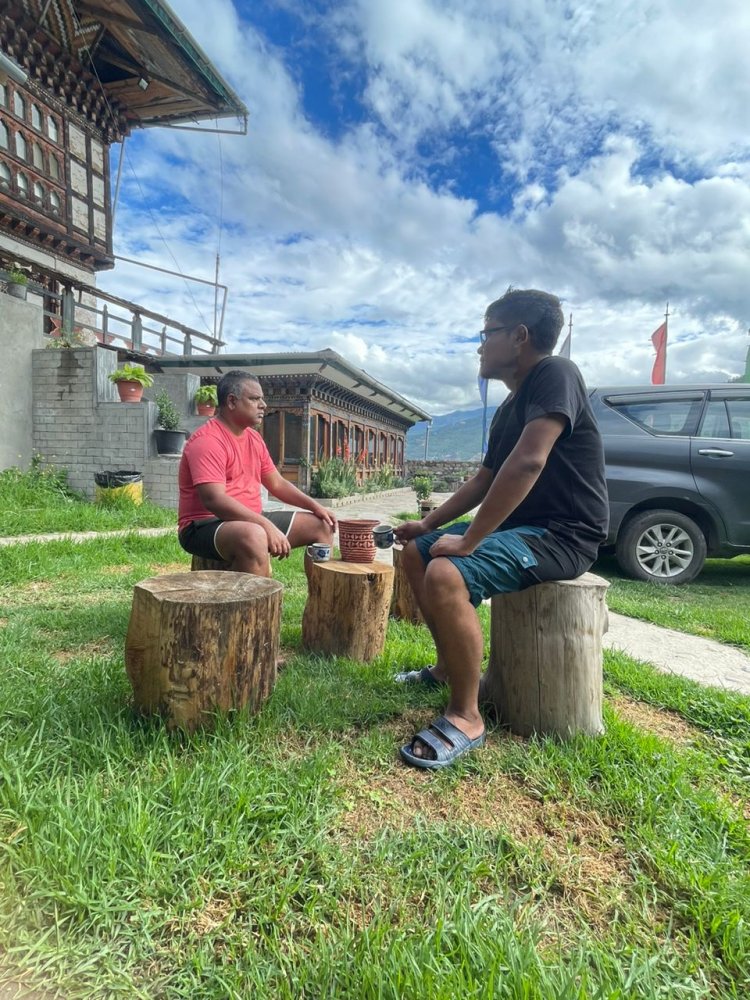
The tea is served in a wooden cup, known as Phob - a circular bowl according to the age of guests, from old to young while the snack is presented in a wooden bowl, a Dhapa, or in a bamboo basket, known as Bangshun
This may also be followed by a salt scrub to remove dead skin cells and an oil massage to relieve tired muscles. and an oil massage that re-energizes tired muscles.
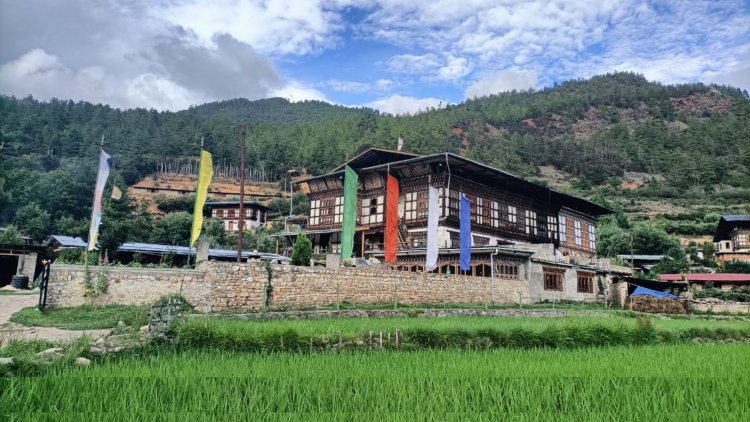
Approximate Cost of a Hot Stone Bath in Bhutan
Being offered in many hotels all over Bhutan, the price of one bath could roughly be around Nu 1000 to Nu 1500 based on group size and duration.
The price may vary as per the facilities and additional benefits /comfort provided by a host.
Places to Experience a Hot Stone Bath in Bhutan
Here are options from where one could experience a hot stone bath:
- 200-year Heritage Farmstay at Paro: This is a bath that is provided close to farmland outskirts of the city, Cost-wise, is a more economical option too.
- Phuentsho Yangkil Resort - Pobjika Valley
There are several places such as Bumthang, Pobjika, and Thimpu in Bhutan where you experience stone. Check with your tour guide in advance to make arrangements a day before.
Few Health Benefits and Healing Powers of Hot Stone Bath
- Hot stone bath is a traditional healing practice that has been in use by local folk for ages in Bhutan. It is believed to be a very satisfying experience in itself, especially during colder months.
- In the past, these baths served as a source of relaxation for the families after the long, hard months working in the field in winter.
- Hot Stone baths seem to have helped in relieving them of bodily stress and were believed to cure any other body ailments they might have had after a long travel or daily work,.
- The heat of the water, the medicinal herbs, and the minerals such as Minerals commonly weathered from rocks and washed into streams and other bodies of water include quartz, feldspar, biotite, amphibole, pyroxine, olivine, calcite, and pyrite. released from the stones, all combined are believed to have many curative properties
- It is said to be very helpful for skin ailments such as arthritis, headaches, nosebleeds hypertension, piles joint pain, stomach disorders, blood pressure, and other internal aches if any.
- Overall, it has very relaxing and therapy for both the body and mind and definitely is not have harmful side effects aftermath!
The above article has been penned after a personal experience of the author. If you have visited Bhutan and got a blissful experience.Then
Please don't hesitate to write a comment about it.









